What is dihydro-testosterone (DHT)?
The 5- reductase enzyme converts testosterone to DHT, an androgen. To put it another way, it’s a waste product of the testosterone production process. Among other things, DHT helps to develop men’s sexual organs and other physical characteristics.

DHT is a testosterone-derived androgen (male sex hormone) that is synthesised in the prostate, testes, and other tissues from testosterone. A deep voice, facial hair, and muscles, all of which are associated with male sexual traits, must be developed and maintained.
5-reductase (pronounced 5-alpha-reductase), an enzyme found in hair follicle oil glands, helps testosterone turn into DHT.
The hormone DHT attaches to receptors in the hair follicles of men who are genetically predisposed to male pattern baldness, causing the hair follicles to miniaturise (or shrink) and finally stop producing new hair.
Men who are genetically predisposed to male pattern baldness are more likely to have hair loss due to the male sex hormone DHT (also known as androgenic alopecia), which binds to receptors in the scalp and causes hair loss.
In both sexes, the hormone dihydrotestosterone, or DHT, is present. Male and female testes and ovaries convert testosterone to DHT, which is then released into the body. An enzyme known as 5-alpha reductase helps with this (5-AR).
During puberty, DHT plays an important part in the development of masculine traits including muscles, facial hair, and a deep voice, among others.
It aids in the regulation of organ functioning in women and aids in the production of oestrogen in their bodies. These hormones assist maintain muscular mass as you age, as well as aid in sexual well-being and fertility.
DHT levels can rise with ageing and have a role in hair loss. The receptors on your hair follicles might attach to DHT when it is freely flowing through your circulation.
The follicle shrinks as a result, and fresh hair growth finally stops. Even though DHT has a lot of advantages, it’s also responsible for hair loss.
High amounts of dihydrotestosterone are the result of excessive testosterone production. For both men and women, this can be a challenge. A swollen prostate and prostate cancer are two abnormalities that men might detect.
Excess hair on the body and face, menstrual problems, and adult acne are all side effects for women who use it.
In a similar way, both men and women who have low levels of DHT have a later start to puberty. Because DHT function is so strongly associated with masculine traits, low DHT has less impacts on women than it does on males. 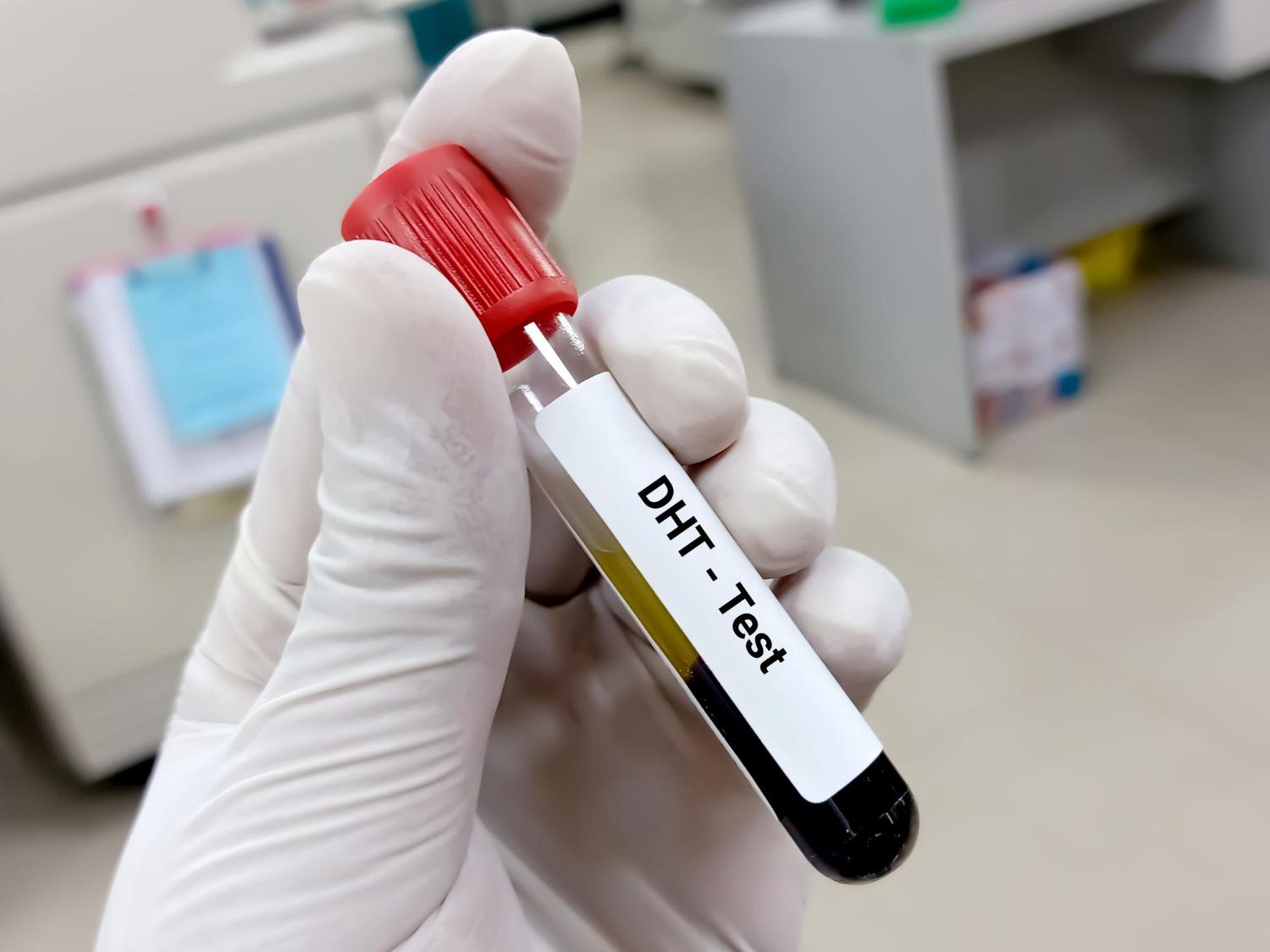
DHT deficiency in males increases the chance of developing aggressive prostate cancers, as well as alterations in body fat distribution that can lead to gynecomastia and other problems. Additionally, they may not grow body hair as they should.
Contrary to popular belief, testosterone and DHT are not interchangeable terms. When it comes to testosterone, only the prostate, skin, and hair follicles employ DHT, a highly powerful version of the hormone.
DHT hair loss can be stopped or controlled using a number of DHT blockers, which are available as medications, shampoos, and meals. Let’s find out what they are and how they help cure DHT-induced hair loss.
Does DHT sensitivity result in complete hair loss once a certain amount of time has passed?
However, this does not occur overnight. First, let’s talk about the four stages of hair development that occur in your head all the time.
- The ANAGEN PHASE is a period of rapid development that can last anywhere from two to six years in most people.
- CATAGEN PHASE: The short-lived transition phase.
- TELOGEN PERIOD: The three-month-long resting phase.
An average person loses 100–150 hairs each day during the exogen period. When the follicle creates a new hair, it pushes out the old one during the exogen phase, causing the hair to fall out.
The anagen phase shortens (giving hair less time to develop) and the telogen phase lengthens with the onset of androgenic alopecia because follicles get smaller and smaller, making it more difficult for hair to grow (more time for follicle to rest without producing a new hair).
Baldness, on the other hand, is a long-term condition that develops gradually over time. And although DHT is already reducing your hair follicles, you still have time to take action and maintain more of your own. DHT blockers fill this need.
DHT and Hair Loss: What Role Does It Play?
According to the American Hair Loss Association, DHT is a prevalent cause of male pattern baldness and female hair loss. Despite the fact that DHT is a sex hormone associated with male traits such as facial hair and a deep voice, it is produced in the ovaries of women and likewise in men.
Long-term attachment of DHT to hair follicles can cause receptors to shrink the follicles, leading to finer hair and eventually hair loss.
Treatments to Reduce DHT Levels
DHT blockers come in a range of shapes and sizes. There are several therapy methods available, including the following:
Medication on a prescription only basis. Oral finasteride, a drug that prevents testosterone from being converted to DHT, has been authorised by the FDA for use by males. According to a 2019 study published in the Journal of Drugs in Dermatology, topical finasteride “substantially reduced” the amount of DHT in the scalp. 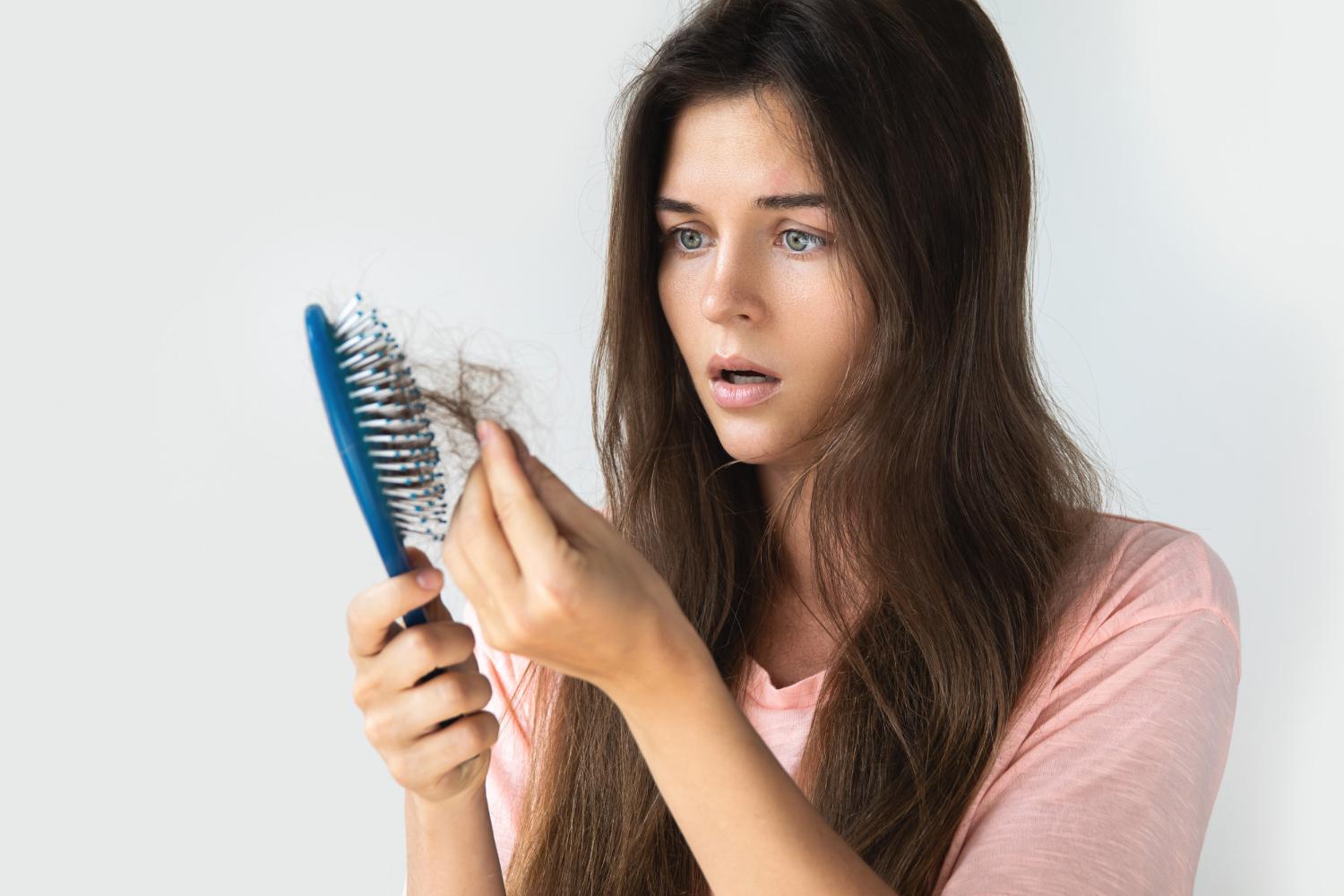
According to the American Academy of Dermatology, a comparable treatment option for women is spirolactone, which can be taken orally or topically (AAD). Gynecomastia, sadness, and reduced sex drive have all been linked to using oral Finasteride.
Shampoos. Competing DHT-blocking shampoos, such as those containing ketoconazole or saw palmetto, fill the shelves of drugstores. According to dermatologist, using the shampoo frequently and letting it sit on your scalp for at least five minutes before washing will help prevent hair loss.
Vitamins. Depending on your dermatologist’s recommendation, you may need to take a multivitamin or take biotin, iron, or zinc supplements as part of your hair loss therapy.
Products made from natural ingredients. Green tea and an extract known as Oriental thuja are only a few of the naturals that scientists believe have potential, such as Lycopene.
Dermatologists, on the other hand, argues that more research is needed to determine how effective many of these products are.
Foods. To help prevent hair loss, Dermatologist recommends including foods high in zinc (such as kale, white mushrooms, and spinach) or lycopene (such as carrots, mangos, and tomatoes) in your diet. DHT is considered to be blocked by certain nutrients.
How To Treat DHT Hair Loss?
1. DHT Blocker Medicine
(Finasteride)
DHT is effectively blocked by finasteride, according to a research published in the American Academy of Dermatology. It has a dual purpose: it slows down hair loss while also promoting new hair growth in the future.
Another research published in the Journal of Investigative Dermatology found that 66% of men who took 1mg of finasteride saw some hair regrowth and 83% were able to keep their initial hair follicle counts.
This drug is classified as an “anti-androgen” in the scientific community because of its action on the enzyme 5 alpha reductase. To put it another way, the medication works by blocking androgens like DHT.
Finasteride’s inhibitory characteristics may be due to the drug’s ability to prevent testosterone from being converted to DHT.
When using finasteride, some of the adverse effects include itching, weight gain, dizziness, cold, and other similar symptoms. A dermatologist’s visit is required prior to using this medication.
Minoxidil (Regaine)
A lotion called Regaine, which contains minoxidil, is applied daily to the scalp. Pharmacies sell it over-the-counter, without a prescription. In some males, it appears to aid with hair regeneration, although the specific mechanism is unclear.
You may get Regaine in two different strengths, either a lotion or a foam. Hair loss products based on minoxidil typically include 5% or 2% minoxidil.
Using Regaine every day for several months will have an impact on your hair regeneration, but this is a long-term solution. Like Propecia pills, your hair loss will return if you stop taking the lotion. Aside from that, if you stop using the lotion, all new hairs that have developed since you started therapy will fall out within a few months.
2. DHT Blocker Shampoos/Hair Oils
Numerous shampoos and oils are available that inhibit DHT. In order to reduce hair loss, they’re a great option. Alpha 5 Reductase is inhibited by a mixture of active substances such as saw palmetto, biotin, ketoconazole, and others.

Excess DHT is reduced by shampoos, which provide a favourable environment for hair development, clean the scalp, unclog clogged pores, and improve blood flow to the scalp. This results in healthier-looking hair.
1. Ketoconazole
Disruption of DHT is associated with a DHT-blocking shampoo component. By inhibiting 5AR, ketoconazole reduces the body’s synthesis of DHT and hair loss.
2. Pumpkin Seed Oil
Hair loss is a problem that several plant-based oils can assist with. Phytosterols are claimed to encourage hair development while blocking enzymes and hormones in the scalp that contribute to hair thinning and hair loss.
Using a carrier oil such as olive oil, massage pumpkin seed oil into the scalp and let it sit for a few minutes. Before you wash it off, let it sit for a few hours or overnight.
3. Saw Palmetto
Known as saw palmetto, this natural supplement is derived from the palm tree berry serenoa repens, which is a kind of saw palmetto. This component, like others, is thought to impede 5-alpha-reductase action.
4. DHT Blocker Food List
A wide variety of DHT blocker meals work to prevent DHT from being produced and stop it from binding to hair follicles. 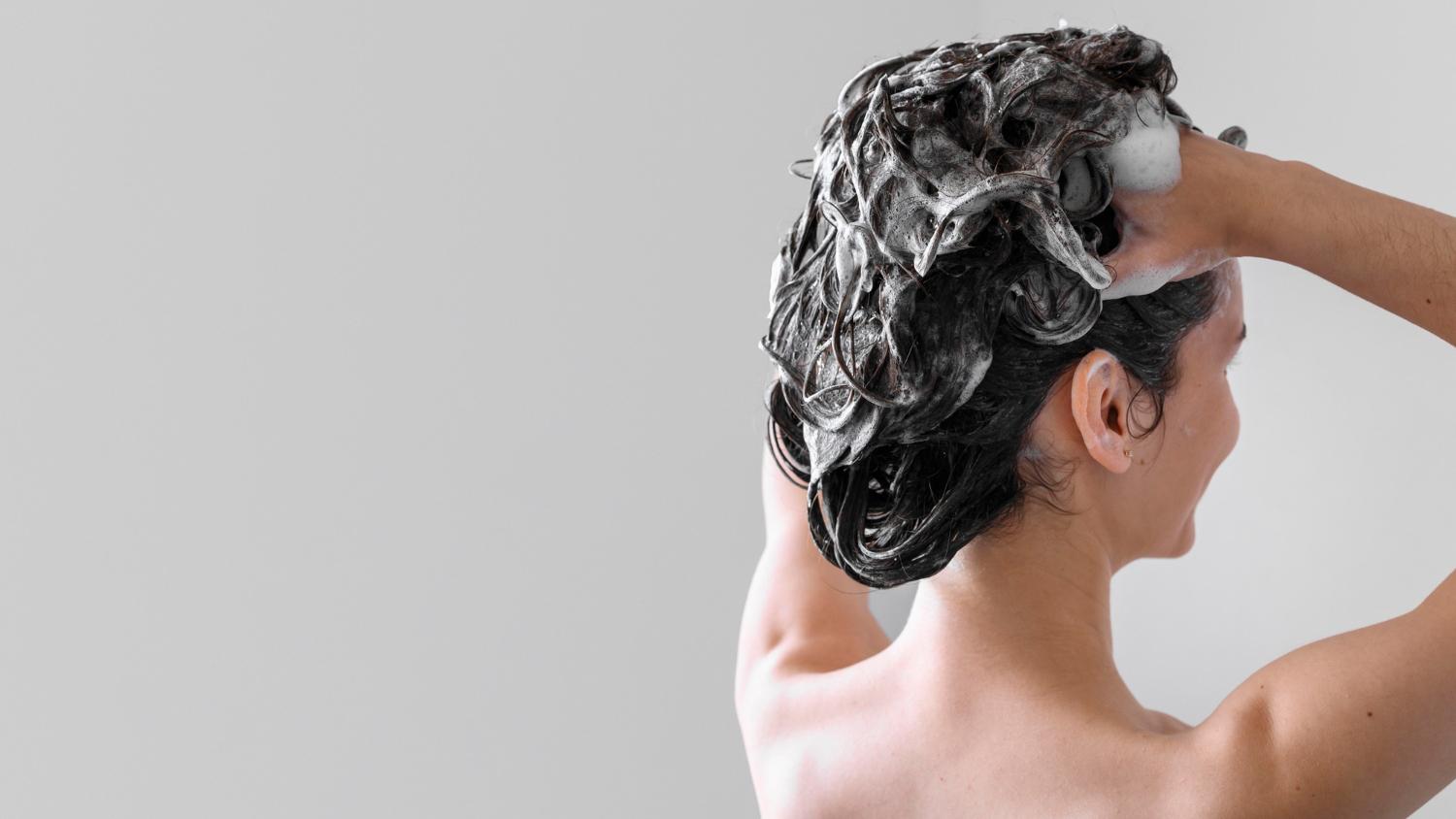
Foods like kale, mushrooms, spinach, and the like are good examples. Mangoes, carrots, watermelons, and tomatoes also contain lycopene, which is an effective DHT blocker.
Bananas, oily fish, beans, liver, and berries, which are rich in biotin, act as natural DHT blockers while also nourishing the scalp and skin.
Incorporate bone broth, sesame seeds, black pepper, pumpkin seeds, and soybeans into your diet.
5. Vitamin Supplements
A. Vitamin B3 Or Niacin
It’s a necessary vitamin that promotes hair development by increasing blood circulation in the scalp. Niacin is found in a variety of foods, including sunflower seeds, liver, mushrooms, fish, and fish oils, as well as green peas and avocados. You can also take a niacin supplement on the advice of your physician.
B. Vitamin A
When it comes to cell growth, hair is no exception. It needs Vitamin A to keep growing at its current rate.
As a bonus, vitamin A aids in the creation of sebum, which helps to keep the scalp moisturised and your hair looking young. Hair loss is one of the problems that people with a Vitamin A shortage experience.
Kale, spinach, pumpkin, carrots, sweet potato, yoghurt, eggs, and milk are excellent sources of Vitamin A.
C. Biotin
A lack of biotin has been linked to hair loss, according to recent research. As a B vitamin, biotin assists in the delivery of nutrients and oxygen to the scalp, which promotes the development of new hair.
Leafy greens, fish, meat, and whole grains are all excellent sources of iron.
D. Vitamin C
Vitamin C is a powerful antioxidant which helps in the production of collagen. Additionally, Vitamin C also aids in the absorption of iron, a mineral that promotes hair growth.
Citrus fruits, peppers, guavas and strawberries are all rich in Vitamin C.
E. Vitamin D
Hair loss is more likely if your Vitamin D levels are insufficient. This vitamin also helps to encourage the growth of new hair follicles.
Fortified foods, mushrooms, cod liver oil, and fatty salmon are other sources of Vitamin D outside the sun.
F.Zinc
Zinc plays an important role in tissue development and repair in addition to maintaining healthy oil glands and follicles. Hair loss has been observed to be a common sign of low zinc levels.
Pumpkin seeds, wheat germ, spinach, steak, lentils, and oysters are all excellent sources of iron.

How Does DHT Blocking Shampoo Work?
The use of a DHT blocking shampoo can reduce hair loss if your hair loss is linked to DHT and the shampoo’s components are efficient blockers of the hormone’s damaging effects on your scalp follicles.
It’s critical to keep in mind that no one ingredient in DHT-blocking shampoos has been found to be a panacea for preventing hair loss. However, if a shampoo claims to inhibit DHT, look for a label that includes one or more of the following ingredients:
- DHT can’t bind to hair follicles when ketoconazole, an anti-fungal chemical, is present in shampoos for dandruff or psoriasis.
- Saw palmetto, a plant with DHT-blocking properties, has been used in clinical trials.
- Lavender oil or vitamins rich in biotin, such as H, B7, and B8, can help stimulate hair development.
- Rosemary oil can help your scalp’s circulation by stimulating blood flow.
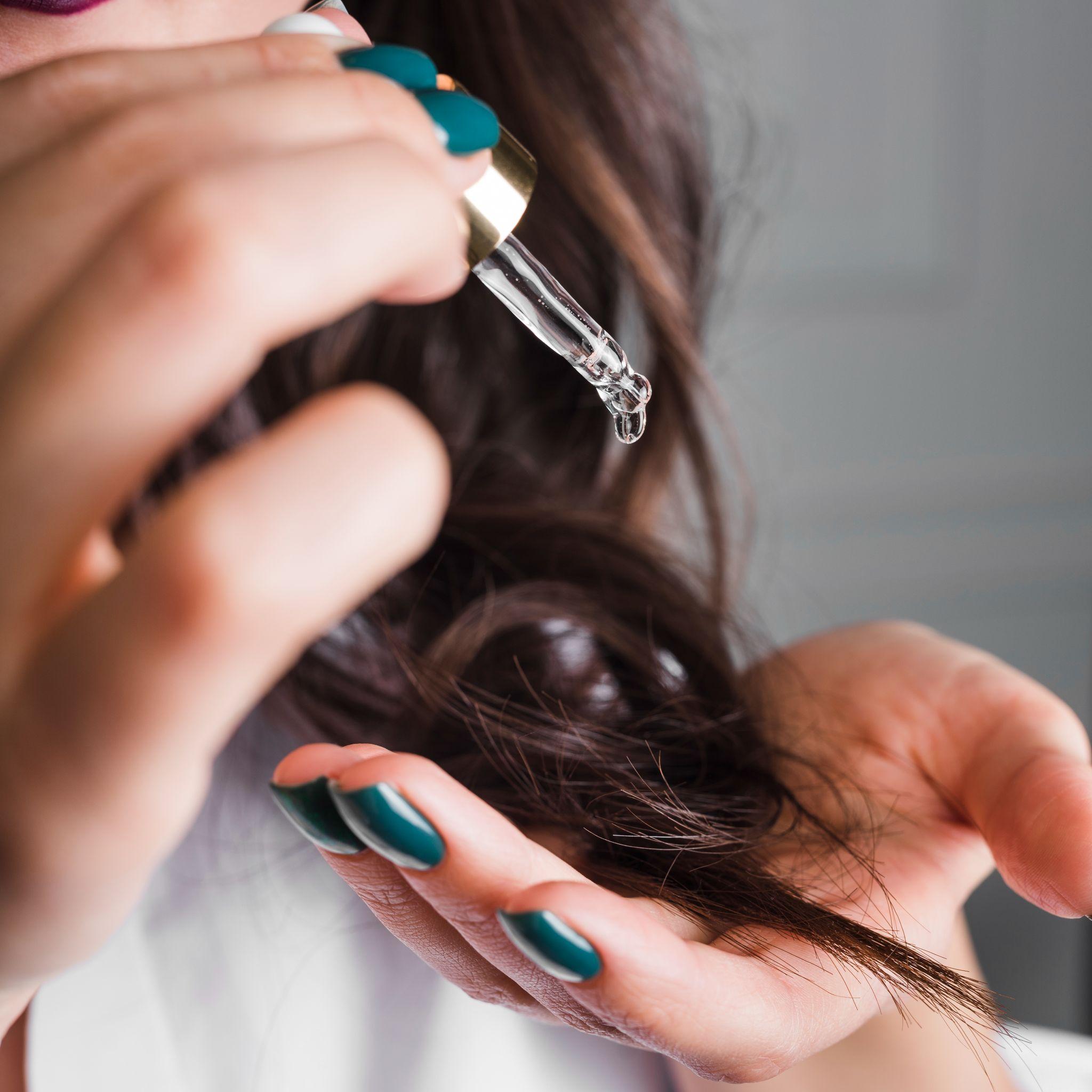
- Pumpkin seed oil can stop testosterone from becoming dihydrotestosterone (DHT).
- Tea tree oil can be used to treat fungal infections of the scalp.
Shampoos in conjunction with a treatment like minoxidil makes them more successful.
Once the shampoo has been allowed to remain on your scalp for many minutes before rinsing, it will be more effective, as will using it twice daily (unless their labels recommend otherwise).
There are certain shampoos out there that contain preservatives like parabens that might irritate your scalp or contain sulphur or synthetic compounds that may do the same.
It’s important to remember that once you start taking a DHT blocker, you will be taking it for the rest of your life if you want to avoid relapse. Pregnant women and prepubescent boys who are experiencing hair loss should avoid using DHT-blocking shampoos.
Who Should not use DHT Blockers?
Consult your doctor before taking Propecia if you’re scheduled for a PSA blood test since it may interfere with the results. It is not recommended for usage by women, children, or teenagers.
Before using Regaine, talk to your doctor if you have any type of cardiac disease, such as angina. Avoid using it if any of the following are true. If you have an allergy to minoxidil or any other part of Regaine, see your doctor before using it.
High blood pressure or medicine for it is something you should be aware of. Psoriasis or another disease of the scalp. If your hair is cut short or you use a hat to cover your bald spots,
As a minor or senior citizen, please do not use DHT Blockers.
How To Test DHT Levels?
Visit a dermatologist or doctor to learn about your DHT levels. They may advise a saliva panel test or a blood test. If you’re worried about DHT and hair loss, it’s best to get the test done after speaking with a specialist.
Dermatologists are well-versed in spotting hair loss or male pattern baldness, and they’ll give you sound advice on what to do next.
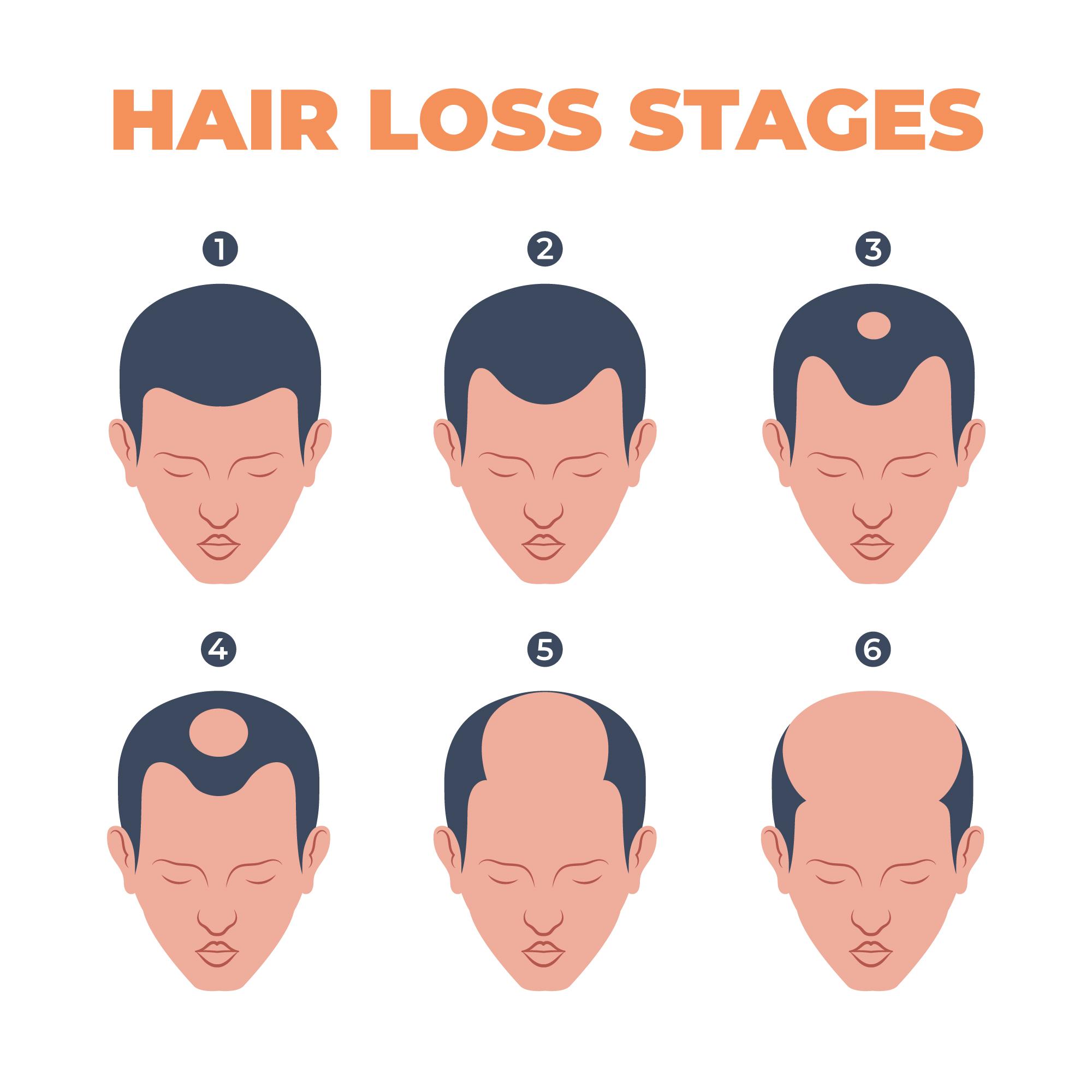
What Are The Side Effects Of DHT?
If your DHT levels are abnormally high, you may have the following symptoms:
In women, it’s possible to have:
- Acne
- Menstruation has stopped (amenorrhea)
- Depression
- Hair growth on the back, chest, and face that is excessive (hirsutism)
- Obesity
For men, it’s possible to have:
- Cancer of the prostate
- Prostate growth
- Congestive heart failure
After an injury, the recovery process is quite slow.
- Sleep apnoea, aggressiveness, and excessive perspiration can all be symptoms of elevated DHT levels in the body.
Hair loss may be combated in several ways, the first of which is by being informed and applying what you learn. Rather from generating additional problems as a result of your anger and aggravation about hereditary hair loss, identify methods that help control the situation instead.
Because male pattern baldness is characterised by sensitivity to the hormone DHT (dihydrotestosterone), medications that inhibit the effects of this hormone are expected to slow or reverse the disease.



